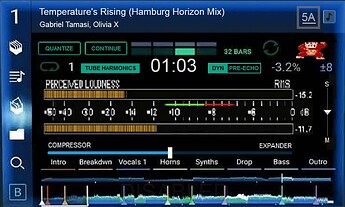Not too shocking a price. It’s about the same price as rotary versions of the NXS2, A9, and V10 would go for.
No customization on the channel tone controls or master iso frequency bands.
Limited filters.
I’m not sure what this transformer output design is supposed to be doing. The name and language of describing its sound is like someone’s been reading my online reviews of DJ mixers ![]() . Usually when I think of the use of transformers on output stages, though, I think of very well-designed and expensive balanced outs, but they’re not talking specifically about the XLRs on this. Nowadays, though, you can simply source the balanced outs from certain arrangements of high-end DACs’ outputs.
. Usually when I think of the use of transformers on output stages, though, I think of very well-designed and expensive balanced outs, but they’re not talking specifically about the XLRs on this. Nowadays, though, you can simply source the balanced outs from certain arrangements of high-end DACs’ outputs.
It’s using the same DSP stuff as the NXS2, V10, and A9, which is going to mean it doesn’t differentiate its digital to digital sound hugely from those. Iso420 & MP2015, X1700, and DB4 will still produce superior sound, not to mention a bunch of other analog mixers out there that I’d rank just below these four but still above Pioneer. If you’re in the market for a Pioneer mixer, though, and want a rotary, it’s potentially more appealing for some users than the converted others in their lineup.
No master iso bypass? ̶E̶v̶e̶n̶ ̶M̶a̶s̶t̶e̶r̶ ̶S̶o̶u̶n̶d̶s̶ ̶f̶i̶n̶a̶l̶l̶y̶ ̶f̶i̶g̶u̶r̶e̶d̶ ̶t̶h̶a̶t̶ ̶o̶n̶e̶ ̶o̶u̶t̶.̶ V10 has one.
Weird that the iso boost setting is not in a menu somewhere, on the back, or anywhere else other than next to the knobs right there. That’s literally an install setting, not something you want the DJs messing with.
The combining of the isolator bands with the sends to the little FX section is neat.
Tiny USB-C port?
No SPDIF output?
I think the biggest selling points for it are the nifty digital needle meter that can probably do other stuff later with firmware updates, and the fact it looks like a mini digital STP Vestax Phoenix.
At least they’re actually releasing a digital rotary, though. Both InMusic and A&H have inexplicably stopped their models. Pioneer’s been lambasted for years for stopping their own rotary conversion kits, so this at least placates that.
Edit:
After some further investigation, it looks like the transformer is being used as an analog effect contributing linear harmonic distortion like certain tube (valve) arrangements. I recall the late Tim de Paravicini (of audiophile pre-amp & headphone amp design fame) explaining that he could do a completely transparent-sounding tube design that sounded non-tubey, or instead use stuff other than tubes like FETs and transformers to do much of what tube coloration can.
The Euphonia’s quasi-unity or sweet spot on the channel rotaries being 7ish, which (without the old Pioneer shifting fader unity + master volume + headphone level method they abandoned recently) is likely not the actual digital unity of the mixer, seems like another recipe for inaccuracy, but at least does give people the option to overload the transformer if they want. Still, it’d be better to do these harmonics digital-domain if you’re on a digital mixer.
Anyway, InMusic certainly has experience with adding these optional types of harmonics on their DJ gear. I still think having the PPD 9000 Alesis tube stuff added on Prime would be nice:
